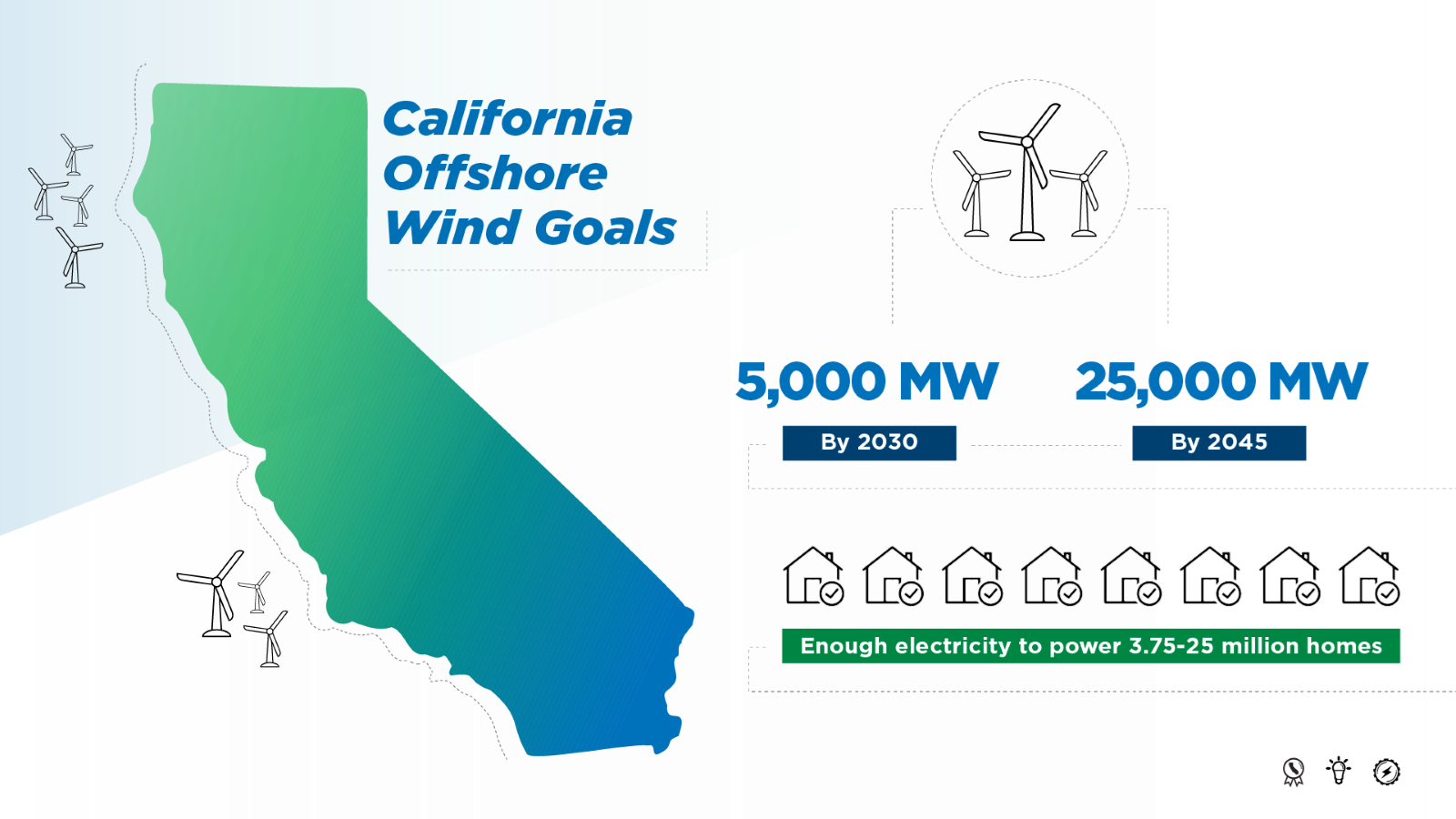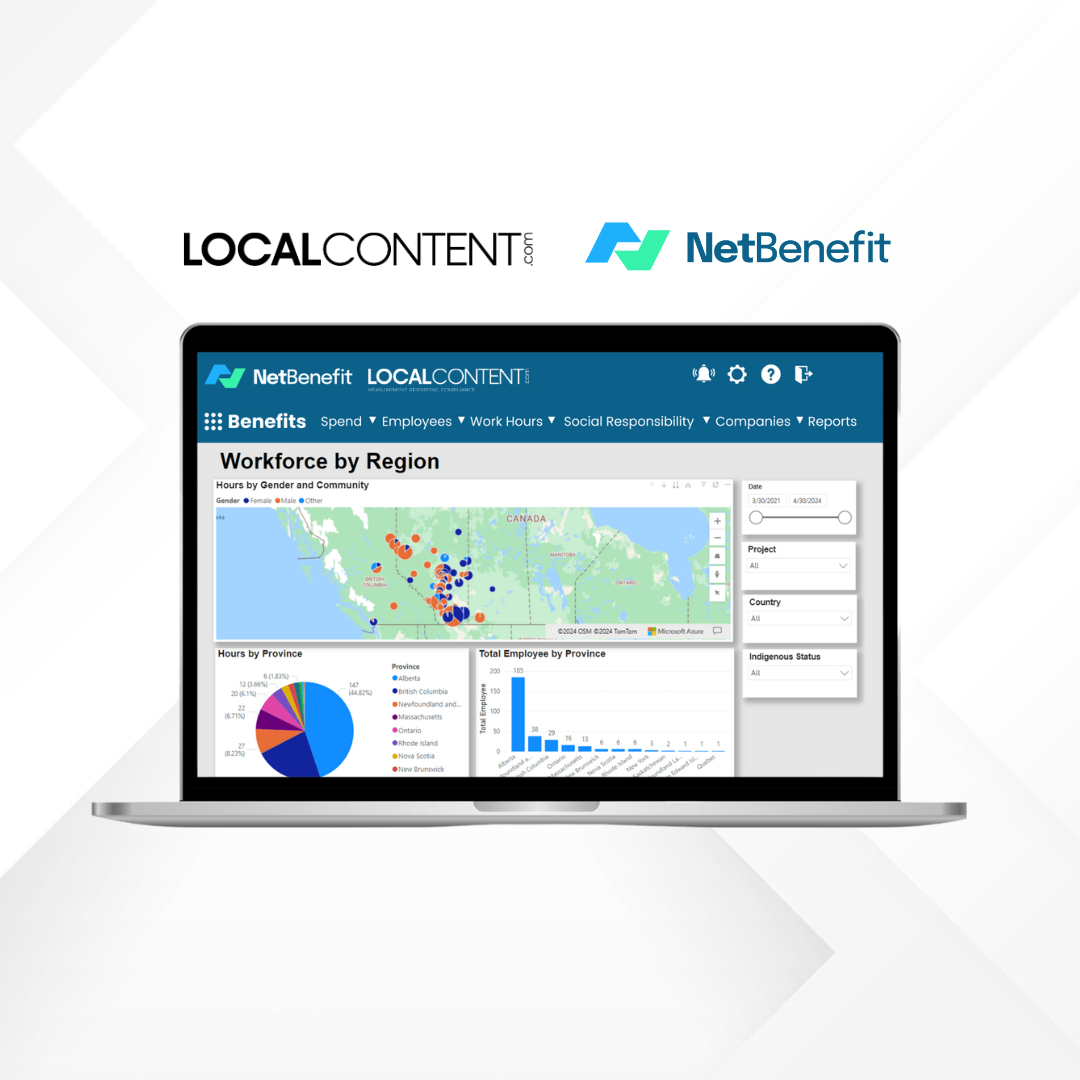SACRAMENTO – The California Energy Commission (CEC) on Wednesday took a major step toward achieving the state’s 100 percent clean electricity future by adopting a comprehensive strategic plan that will guide the development of offshore wind energy, one of the largest untapped sources of renewable energy in the state.
The plan outlines analysis and strategies to deploy floating turbines off the state’s central and northern coasts with a planning goal of 25,000 megawatts (MW) of capacity by 2045, enough to power 25 million homes. This transformative effort advances California’s ambitious clean energy goals to deliver substantial economic benefits statewide.
“Adopting this comprehensive strategic plan for offshore wind development marks yet another significant milestone in California’s journey to a 100 percent clean energy future,” said CEC Chair David Hochschild. “Offshore wind has the potential to accelerate the clean energy transition by providing a consistent, reliable source of clean electricity, supporting our ambitious climate goals, creating local manufacturing jobs and driving economic development. We are committed to harnessing this clean resource to ensure a sustainable energy future for all Californians.”
“As we move forward with our plans to develop offshore wind energy in California, we are not only investing in renewable energy, but also in the future of our state’s economy. Offshore wind will create thousands of new jobs for Californians, from manufacturing to maintenance, and build out a robust supply chain to support this growing industry,” said Dee Dee Myers, senior advisor to Governor Gavin Newsom and director of the Governor’s Office of Business and Economic Development (GO-Biz). “Our commitment to offshore wind will bring sustainable growth, reduce our carbon footprint, and secure a cleaner, brighter future for all Californians.”

Why It Matters
California’s electricity grid is served by nearly 35,000 MWs of renewable resources today, but to meet the 2045 goal, the state will need an additional 148,000 MWs, which will likely require the development of land and ocean space across many regions of the state.
Offshore wind stands out for its potential to generate vast amounts of electricity thanks to strong, consistent winds off California’s coast. Additionally, offshore wind can generate electricity at times when solar power drops off, such as overnight and in winter, providing a complementary electricity generation profile to the state’s renewable energy portfolio.
Offshore wind development is poised to deliver substantial economic benefits to California. A recent study projects the creation of more than 8,000 jobs during peak offshore wind development, many of which will be unionized, providing stable and well-paying employment opportunities.
The plan underscores a commitment to responsible development that reduces greenhouse gas emissions and pollution impacts for the climate, in communities, to public health and to the environment, and minimizes impacts to California Native American tribes, ocean users and marine wildlife.
Off the California coast, floating wind energy technology has been identified because it’s particularly suited to deep waters and offers several benefits including the ability to access stronger and more consistent wind resources farther offshore and reduced environmental disturbances to the seabed.
Next Steps
Following adoption of the strategic plan, the CEC and partner agencies will advance the strategic plan by:
- Continuing discussions and consultations with tribal governments, underserved communities, fisheries, industry, ocean users, environmental and environmental justice groups, and federal, state, and local agencies.
- Advancing and exploring the recommendations and strategies developed in the strategic plan.
Background
This strategic plan is the fourth and final work product the CEC was directed to prepare by Assembly Bill 525 (Chiu, Chapter 231, Statutes of 2021), in coordination with federal, state, and local agencies, tribal governments, and a wide variety of stakeholders.
It reflects months of coordination between multiple state agencies and extensive outreach to and consultation with California Native American tribes, fisheries, industry, ocean users, and environmental and environmental justice groups.
It incorporates and builds off three prior requirements of AB 525:
- The establishment of planning goals of 2,000 to 5,000 MW by 2030 and 25,000 MW by 2045
- A preliminary assessment of the economic benefit of offshore wind related to port investments and workforce development
- A conceptual permitting roadmap
Highlights of the Strategic Plan
Recommendations: The plan contains recommendations specific to marine impacts, underserved communities, workforce development, impacts to California Native American tribes, U.S. Department of Defense impacts, permitting, impacts to fisheries, port development and transmission infrastructure.
Economic and Workforce Development: The plan will help attract investment, create high-quality job opportunities, provide workforce development and supply chain opportunities for local, tribal, and underserved communities, and drive economic development.
Enhanced Grid Reliability & Resiliency: Offshore wind energy will improve the reliability and resilience of California’s electricity system, offering an abundant and complementary energy source to other renewables like solar and hydropower.
Community and Stakeholder Engagement and Tribal Consultation: The CEC is committed to engaging and consulting with California Native American tribes, local communities, industry, ocean users, and environmental and environmental justice organizations to ensure the responsible and sustainable development of offshore wind energy.
Additional resources:
###
About the California Energy Commission
The California Energy Commission is the state’s primary energy policy and planning agency. It has seven core responsibilities: advancing state energy policy, encouraging energy efficiency, certifying thermal power plants, investing in energy innovation, developing renewable energy, transforming transportation, and preparing for energy emergencies.










